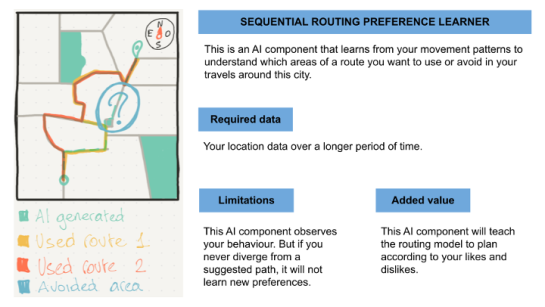
Title: PEER: the Hyper Expert Collaborative AI Assistant
Call ID: HORIZON-CL4-2022-HUMAN-02-01
EU nr: 101120406
Total Budget: 7,737,900 €
VUB Allocated Budget: 1,871,500 €
Contact: Prof. Ann Nowé
https://ai.vub.ac.be/team/ann-nowe ;
AT ERIS we got a chance to talk to Ann and asked her 2 questions:
What is PEER about?
PEER aims at directly contributing to two of the European Commission’s priorities: "An economy that works for people" and "Europe fit for the digital age". By improving interaction between humans and AI systems, PEER wants also to contribute to the following Commission policy initiatives: (i) adopting a ‘human-centric approach’ for digital technologies including artificial intelligence; (ii) up-skilling and reskilling European workers, particularly ‘digital skills’ through on the one hand our AI co-creation workshops, and on the other hand novel human-centric AI methods that will allow the development of future AI products which can more seamlessly collaborate with human users in solving their problems.
As an example: in collaboration with the City of Amsterdam, PEER will develop a personalized routing system that personalises routes based on their requirements and abilities. Since wheelchair users will require different kinds of routes than pedestrians, while the elderly might require yet different routes, a PEER-style mixed human-AI system is essential for a smooth mobility experience for all.
Why is PEER important to VUB?
The research partners will be led by VUB. Among the Human & AI interaction research partners, two clear perspectives can be identified. One is the AI perspective which approaches the human & AI interaction from the technical side, with expertise in multi-objective optimisation and user modelling (VUB AI Lab). The other is the Human perspective side which is categorised by the SSH partners with expertise in co-creation and design of new media and user-centric operationalisations of key values such as explainability and privacy (VUB SMIT) and Cognitive and Behavioural Assessment and Analysis for Human beings.
Within the Use-Case technology, key expertise will be brought together by the use case providers.
CONTEXT
Sequential decision-making problems are a class of significant and highly complex artificial intelligence problems. These require the planning and execution of a sequence of actions to achieve a desired goal. Examples include routing problems, which involve a sequence of steps from source to destination; the control of manufacturing processes, which consist of a variable sequence of operations; or active learning problems, in which machine learning algorithms query human users for a sequence of inputs.
AIM
We address the compelling scientific and technological goal of tackling users' lack of trust in AI, which currently often hinders the acceptance of AI systems. We break down this problem into two complementary aspects. First, users do not understand current AI systems well, with a lack of transparency leading to misinterpretations and mistrust. Secondly, current AI systems do not understand users well, offering solutions that are inadequately tailored to the users' needs and preferences.
METHODOLOGY
PEER will focus on how to systematically put the user at the centre of the entire AI design, development, deployment, and evaluation pipeline, allowing for truly mixed human-AI initiatives on complex sequential decision-making problems. The central idea is to enable a two-way communication flow with enhanced feedback loops between users and AI, leading to improved human-AI collaboration, mutual learning and reasoning, and thus increased user trust and acceptance.
IMPACT
As an interdisciplinary project between social sciences and artificial intelligence, PEER will facilitate novel ways of engagement by end-users with AI in the design phase; will create novel AI planning methods for sequential settings which support bi-directional conversation and collaboration between users and AI; will develop an AI acceptance index for the evaluation of AI systems from a human-centric perspective; and will conduct an integration and evaluation of these novel approaches in several real-world use cases.
